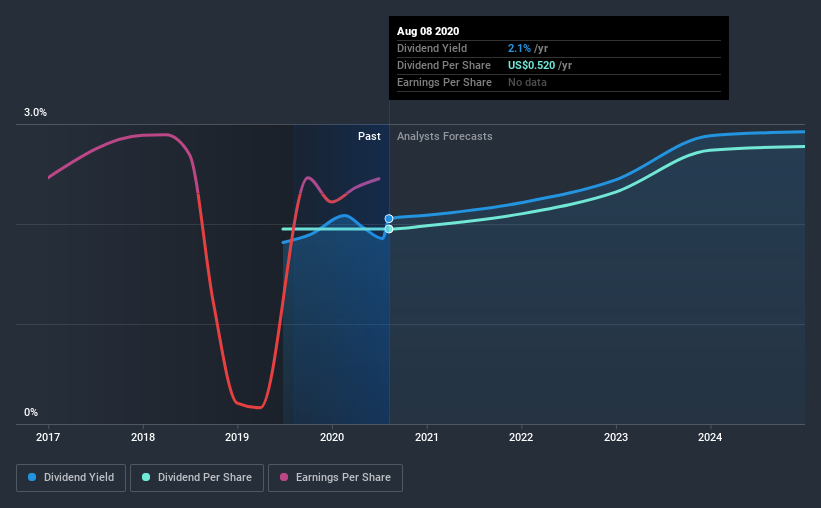Just Four Days Till Corteva, Inc. (NYSE:CTVA) Will Be Trading Ex-Dividend

Corteva, Inc. (NYSE:CTVA) stock is about to trade ex-dividend in 4 days. Ex-dividend means that investors that purchase the stock on or after the 13th of August will not receive this dividend, which will be paid on the 15th of September.
Corteva's next dividend payment will be US$0.13 per share, and in the last 12 months, the company paid a total of US$0.52 per share. Calculating the last year's worth of payments shows that Corteva has a trailing yield of 2.1% on the current share price of $25.32. Dividends are an important source of income to many shareholders, but the health of the business is crucial to maintaining those dividends. As a result, readers should always check whether Corteva has been able to grow its dividends, or if the dividend might be cut.
See our latest analysis for Corteva
Dividends are typically paid from company earnings. If a company pays more in dividends than it earned in profit, then the dividend could be unsustainable. Its dividend payout ratio is 83% of profit, which means the company is paying out a majority of its earnings. The relatively limited profit reinvestment could slow the rate of future earnings growth. We'd be worried about the risk of a drop in earnings. Yet cash flows are even more important than profits for assessing a dividend, so we need to see if the company generated enough cash to pay its distribution. Over the last year it paid out 51% of its free cash flow as dividends, within the usual range for most companies.
It's positive to see that Corteva's dividend is covered by both profits and cash flow, since this is generally a sign that the dividend is sustainable, and a lower payout ratio usually suggests a greater margin of safety before the dividend gets cut.
Click here to see the company's payout ratio, plus analyst estimates of its future dividends.
Have Earnings And Dividends Been Growing?
Companies that aren't growing their earnings can still be valuable, but it is even more important to assess the sustainability of the dividend if it looks like the company will struggle to grow. If earnings fall far enough, the company could be forced to cut its dividend. It's not encouraging to see that Corteva's earnings are effectively flat over the past five years. We'd take that over an earnings decline any day, but in the long run, the best dividend stocks all grow their earnings per share.
Given that Corteva has only been paying a dividend for a year, there's not much of a past history to draw insight from.
Final Takeaway
Is Corteva an attractive dividend stock, or better left on the shelf? Corteva has been unable to generate earnings growth, but at least its dividend looks sustainable, with its profit and cashflow payout ratios within reasonable limits. It's not an attractive combination from a dividend perspective, and we're inclined to pass on this one for the time being.
With that in mind though, if the poor dividend characteristics of Corteva don't faze you, it's worth being mindful of the risks involved with this business. For example, we've found 2 warning signs for Corteva that we recommend you consider before investing in the business.
A common investment mistake is buying the first interesting stock you see. Here you can find a list of promising dividend stocks with a greater than 2% yield and an upcoming dividend.
This article by Simply Wall St is general in nature. It does not constitute a recommendation to buy or sell any stock, and does not take account of your objectives, or your financial situation. We aim to bring you long-term focused analysis driven by fundamental data. Note that our analysis may not factor in the latest price-sensitive company announcements or qualitative material. Simply Wall St has no position in any stocks mentioned.
Have feedback on this article? Concerned about the content? Get in touch with us directly. Alternatively, email editorial-team@simplywallst.com.

 Yahoo Finance
Yahoo Finance 
